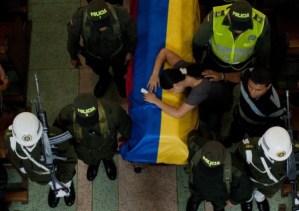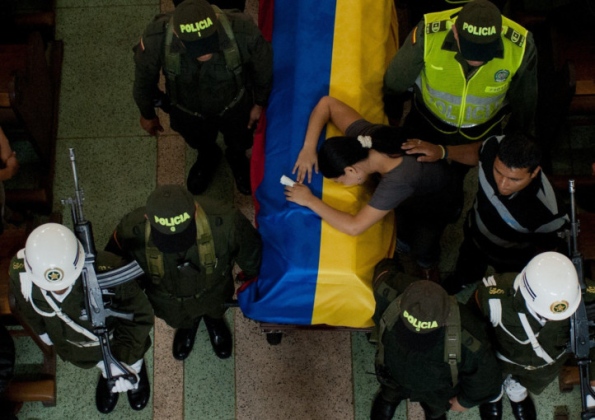IN TWO weeks, talks in Cuba will see the Revolutionary Armed Forces of Colombia (FARC) and the Colombian government try to find a way of ending the country’s 50-year conflict. However, the lack of a ceasefire during current preliminary discussions has ensured an extremely tense start to the meeting.
 As well as how to end the war, discussion topics when negotiations begin formally will include agrarian reform, drug trafficking, victims’ rights and political participation.
As well as how to end the war, discussion topics when negotiations begin formally will include agrarian reform, drug trafficking, victims’ rights and political participation.
In Colombia, optimism in the major cities is contrasted with despair in many rural areas, where the fighting rages on.
President Juan Manuel Santos has rejected attempts by FARC to secure a truce, instead promising a military offensive until a final deal is reached.
“There will be no halting of military operations,” Humberto de la Calle, chief negotiator for the government, announced as the sides met in Oslo, Norway on 18 October. The next day, five Colombian troops died and ten more were injured in a FARC bomb attack in the southern province of Putumayo.
FARC has battled the Colombian state since 1964, when it took up arms in defence of the country’s peasantry. It later drifted heavily into kidnapping and the drugs trade, however, and has long stood accused of losing sight of its Marxist ideology.
In recent months, the country’s south-western Cauca region has seen some of the most intense combat. In the town of Caloto, Colonel John Mesa, commander of the army’s 14th Mobile Brigade, says he is in no mood for a ceasefire.
“One moment they have guns and uniforms and the next they mix with civilians,” he says in frustration at FARC’s guerrilla tactics. “We prefer not to hurt people; they take advantage of this. But if they were not weak, they would not heed the call of peace.”
These results were most apparent during the 2002/10 government of Álvaro Uribe. Aided by the 2000 introduction of Plan Colombia – the US aid package which brought $9 billion of mostly military assistance to combat the guerrillas and the drugs trade – Mr Uribe’s army severely weakened FARC by way of increased airpower, intelligence and troop numbers. In past decades, the wave of right-wing paramilitary groups set up to target the guerrillas, such as the United Self-Defence Forces of Colombia (AUC), brought with them extreme terror, often working hand-in-glove with the army. An estimated 30,000 paramilitaries officially demobilised by 2006, but a huge number have simply formed criminal bands, or so-called “Bacrim”, which have continued where the AUC left off.
“Ten years ago, when military forces began to extensively infiltrate their communications, they increasingly began to decentralise,” says FARC expert Ariel Ávila of Nuevo Arco Iris, a Bogota think-tank. “They can absorb attacks on their commanders very well, and replace them very easily.”
However, this dispersal is what many believe caused FARC to lose control of parts of its structure. With each unit tasked with funding itself, increased criminality soon followed, particularly around control of the coca trade. Now, a power-grab is anticipated if FARC downs its weapons and the Bacrim move into its strongholds.
Caught in the middle of this are the Colombian people, with official statistics indicating that the wider conflict has led to 3.9 million becoming displaced.
Source: Scotsman.com

